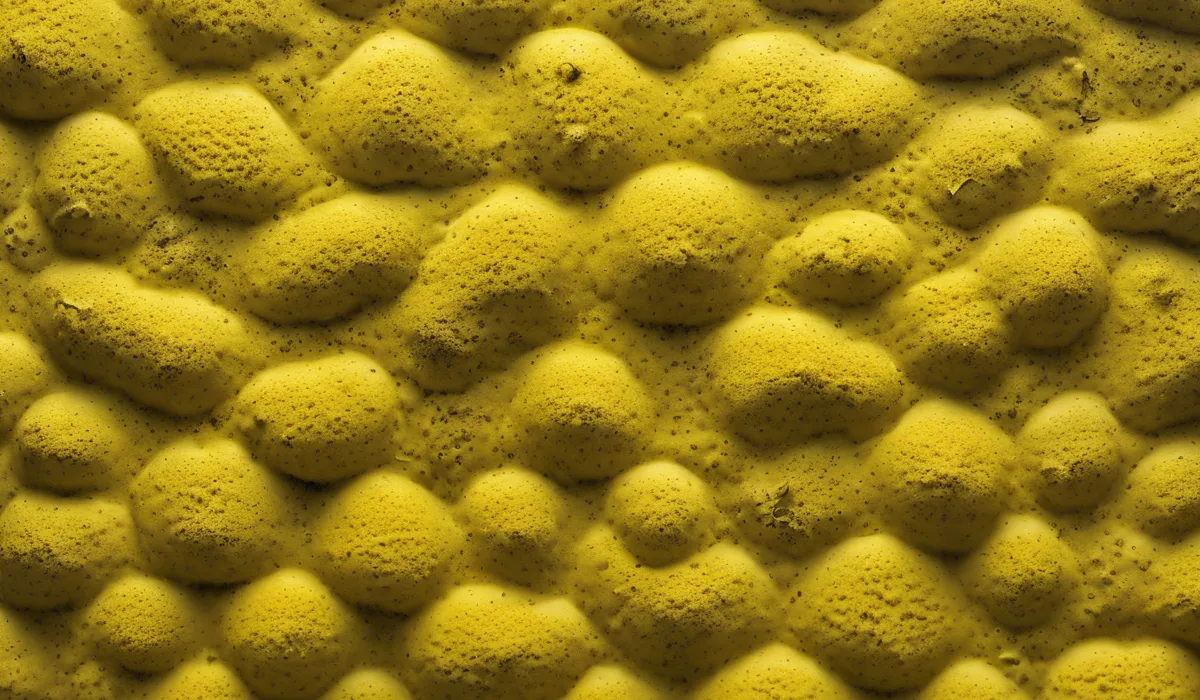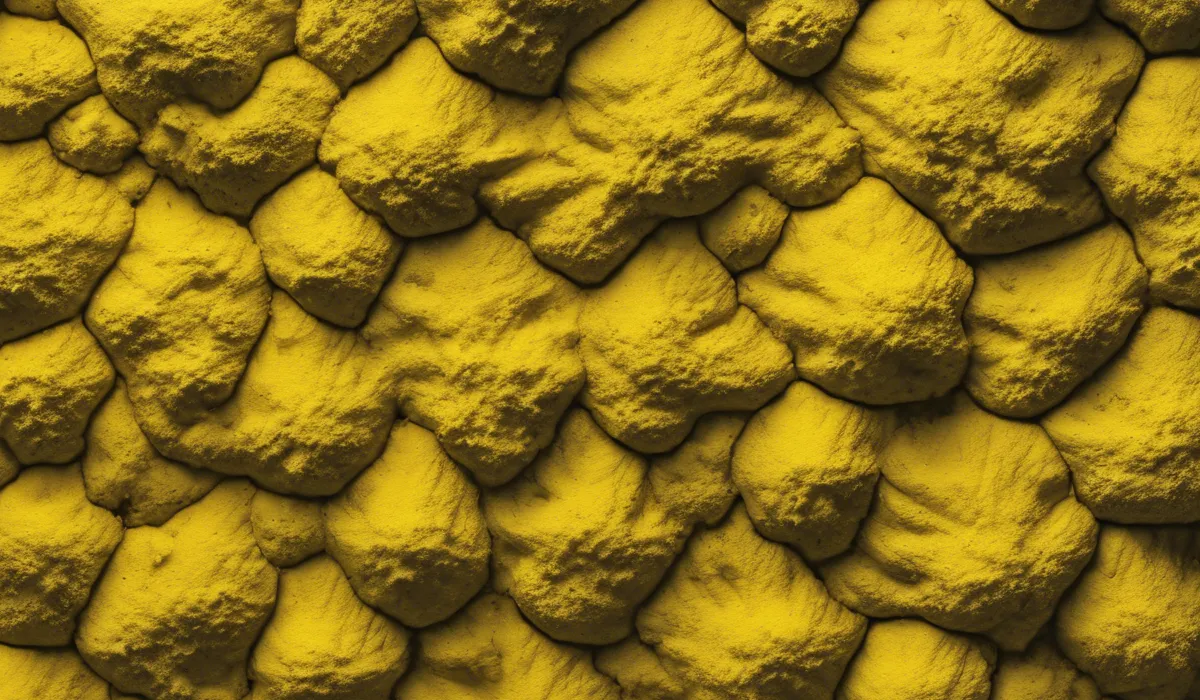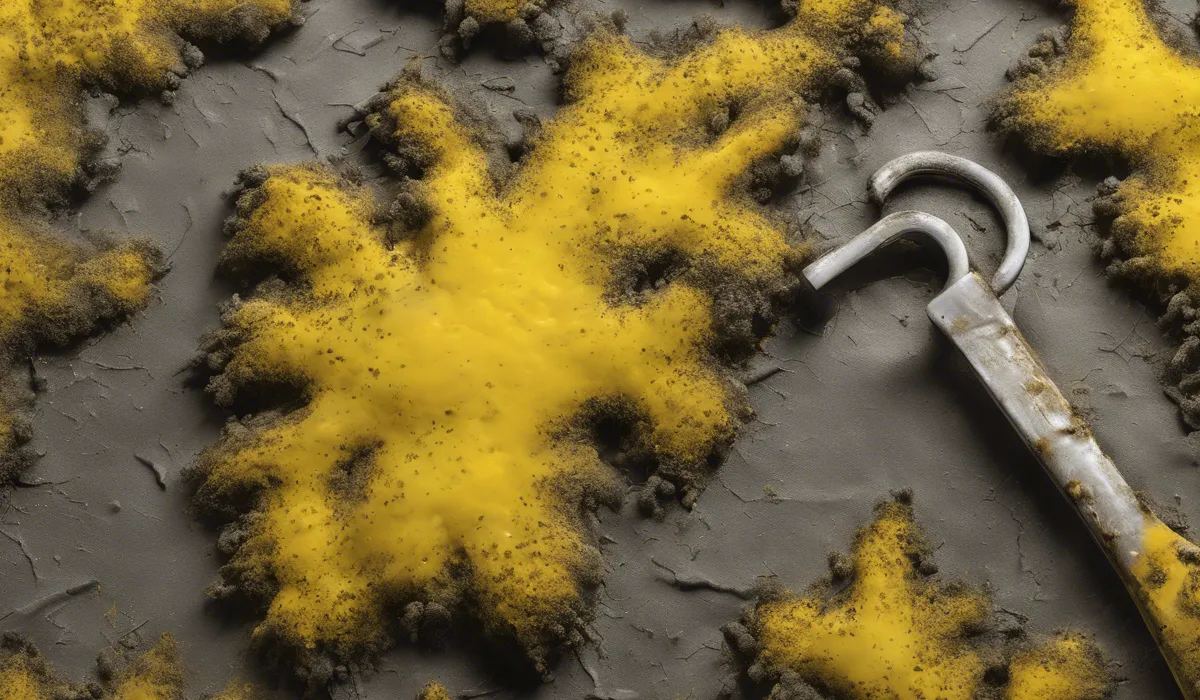Yellow mold can be dangerous as it may cause respiratory problems or allergic reactions in sensitive individuals. It’s important to remove it safely and prevent its recurrence. Professional assessment is recommended for large infestations.
What is Yellow Mold?

Understanding Yellow Mold
Yellow mold is a type of fungus that can grow in various environments. It often appears as a bright yellow patch, and while it can be alarming to find, it is a common occurrence in nature.
It grows on materials ranging from food products to damp surfaces within buildings. This mold can take on different textures, from fuzzy to slimy, depending on the particular species and the conditions under which it is growing.
Species of Yellow Mold
There are several species of mold that may appear yellow. Some of the most common include Aspergillus and Fusarium.
Aspergillus is known for its spore-producing structure and can be found in environments with varying humidity levels.
Fusarium, on the other hand, is often linked to soil and plant debris but can also infiltrate indoor spaces, particularly in agricultural settings.
Both species are capable of producing mycotoxins, which are toxic compounds that can have serious health implications.
Where Yellow Mold Thrives?
Yellow mold flourishes in warm, damp conditions. It is not uncommon to find it in areas where there is water damage, high humidity, or poor ventilation.
Bathrooms, kitchens, and basements are frequent hotspots for mold growth due to the presence of moisture and organic materials for the mold to feed on.
Additionally, yellow mold can grow on a variety of substrates including wood, drywall, wallpaper, and fabrics.
Optimal Conditions for Growth
To thrive, yellow mold needs a food source, which can be any organic material, as well as moisture and warmth.
It can start to grow within 24 to 48 hours of exposure to the right conditions. Poorly maintained buildings with leaking pipes, flooding, or inadequate ventilation provide an ideal environment for yellow mold to grow and spread.
Health Impacts of Yellow Mold

Immediate Reactions to Exposure
When individuals are exposed to yellow mold, they may experience allergic reactions such as sneezing, coughing, watery eyes, and skin rashes.
Some people might also suffer from respiratory issues like asthma attacks or difficulty breathing, especially if they are allergic to mold or have pre-existing respiratory conditions.
Long-Term Exposure Risks
Continuous exposure to yellow mold and its mycotoxins can lead to more severe health problems over time. These health risks include chronic respiratory conditions and immune system suppression.
Prolonged exposure can also potentially lead to neurological problems and toxicity in the body, although these outcomes are less common and would generally result from significant, ongoing exposure to mold mycotoxins.
Groups at Greater Risk
Children, the elderly, and individuals with compromised immune systems or chronic lung diseases are particularly vulnerable to the effects of yellow mold.
Their bodies are less capable of fighting off the allergens and toxins produced by the mold, making them more susceptible to the adverse health effects.
Risk Comparison with Other Molds
While all molds can present health risks when they grow indoors, yellow mold is not usually considered more dangerous than other types.
The key factor that determines the risk of any mold is the extent of exposure and the individual’s sensitivity or allergy to the mold.
Black mold, or Stachybotrys chartarum, is often singled out as particularly hazardous due to its ability to produce potent mycotoxins.
Prevention and Remediation Strategies

Preventing Yellow Mold Growth
To prevent the growth of yellow mold, it is essential to control humidity levels, ensure proper ventilation, and promptly address any water leaks or spills.
Using dehumidifiers, maintaining HVAC systems, and using exhaust fans in bathrooms and kitchens can help keep humidity at bay. Regular cleaning and vacuuming can also reduce the presence of mold spores in the home.
Detecting Yellow Mold
Being vigilant about detecting yellow mold can prevent it from becoming a larger issue. Look for discolored patches on walls, ceilings, and other surfaces. Musty odors are also a telltale sign of mold presence.
If you suspect mold growth, a thorough inspection should be conducted, and if necessary, samples should be taken by a professional to determine the type of mold and the appropriate course of action.
Choosing Between Professional or DIY Remediation
Small areas of mold can often be cleaned by homeowners using soap and water or a mild bleach solution.
However, for larger infestations or when dealing with vulnerable individuals, it is recommended to hire a professional mold remediation service. Professionals have the equipment and expertise to safely and effectively remove the mold and prevent its return.
Addressing Underlying Issues
Removing yellow mold is only part of the solution. It is crucial to address the underlying moisture problems that allowed the mold to grow in the first place.
Fixing leaks, improving drainage, and sealing any water entry points will help to keep the environment dry and mold-free. Regular maintenance and vigilance are key to preventing mold from taking hold again.
FAQs About Yellow Mold Dangers
Is yellow mold hazardous to health?
Yes, yellow mold can be hazardous as it may cause respiratory issues and allergic reactions, particularly in sensitive individuals.
Can yellow mold in a home cause illness?
Yellow mold in a home has the potential to cause illness due to the spores it releases, which can be inhaled and lead to health problems.
What should I do if I find yellow mold in my house?
If you find yellow mold, it is important to remove it safely, using protective gear, and to take measures to prevent its return. For large infestations, a professional assessment is recommended.
Who is most at risk from yellow mold exposure?
Individuals with respiratory conditions, compromised immune systems, or mold allergies are most at risk from yellow mold exposure.
Should I clean yellow mold myself or hire a professional?
For small areas, you may clean yellow mold yourself with proper safety measures; however, for large or widespread infestations, hiring a professional is recommended to ensure safe and effective removal.
Final Thoughts
Yellow mold poses health risks, particularly causing respiratory issues and allergic reactions in some individuals.
It’s crucial to address this mold with caution, ensuring proper and safe removal. For extensive mold presence, seeking a professional evaluation to manage and mitigate the problem effectively is highly advisable to ensure a safe environment.
